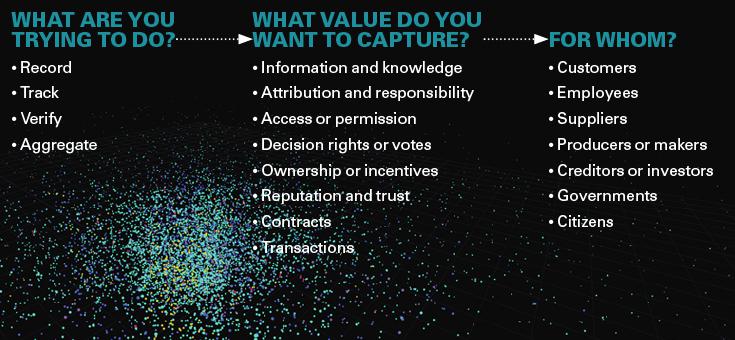Blockchain technology has often been compared to the internet for its disruptive potential. Although blockchain was originally leveraged for financial transactions, it has quickly spread to just about every other sector—including the media and entertainment industries.
Over the past few years, we’ve seen media and entertainment companies begin to leverage blockchain technology to change how they develop and distribute content. Disney was a very early mover, developing a private blockchain platform all the way back in 2014 to make transactions more reliable and transparent. More recently media outlets including The New York Times NYT have announced that they are leveraging the blockchain to combat fake news. In March, TIME even released the first fully decentralized magazine available as an NFT on the blockchain.
We are only just beginning to unlock the full potential of blockchain technology and there are several persistent challenges media and entertainment companies face that blockchain can help solve.
Protecting IP
Intellectual property issues and violations are pervasive in the media and entertainment industries. Musicians, artists, and other entertainers have long struggled to maintain ownership over their work, which means they are not often fairly compensated. This is especially true for musicians and many artists have advocated for higher royalty payouts from streaming platforms.
Artists like Taylor Swift have also faced uphill battles to maintain control and ownership over their IP.
MORE FROMFORBES ADVISORBest Travel Insurance Companies
ByAmy DaniseEditorBest Covid-19 Travel Insurance Plans
ByAmy DaniseEditorResearch by Middlesex University professors has found that IP issues in the music industry are fueled by a lack of transparency. Artists often do not fully understand the terms of contracts and copyrights, which limits their ability to ensure they are fairly compensated. The authors explain how: “The specific details of many streaming deals are currently hidden behind non-disclosure agreements, so that artists and songwriters may not know the terms under which copyrights are being used.” The result is that the majority of funds are often distributed to middlemen and not artists.

Enter blockchain. Using blockchain technology, musicians (and other creators) can register their IP and then link lyrics, videos, and even a bio to the blockchain, by embedding it as metadata in digital recordings. This would all be transparent and publicly available—a sharp contrast from today’s reality. Creators can also use blockchain-enabled “smart contracts” to stipulate who is able to download and interact with their content—and, critically, how they, as creators, will be compensated. When a consumer downloads a song, album, or other work, the smart contract would be triggered and, in turn, automatically charge the buyer and compensate the creator appropriately.
Smart contracts also empower artists with the ability to track every stream across the web and not miss out on potential royalties. This is a huge deal considering that it’s estimated that the top 20 music streaming platforms have collected $424 million in so-called "unmatched royalties” and have no idea who to pay.
Combating misinformation
Trust in the media has reached all-time lows. This has been fueled by fake news, which has undermined the public’s confidence in the media and left many consumers misinformed. The fact that there are more than 3,000 news outlets in the U.S. alone (along with countless independent creators) exacerbates the potential for fake news and makes it increasingly difficult for consumers to discern which sources they can trust. Given this state of affairs, it’s not surprising that the largest media giants in the world, such as New York Times, are eyeing blockchain to fight misinformation.
Because blockchain technology relies on a decentralized and immutable ledger to record information, it is perpetually verified. This means that media and entertainment companies can link all the content that they’ve published, including articles, quotes, and photos to the blockchain and have confidence that it won’t be manipulated. Harvard Business Review has reported that the New York Times began looking to fight misinformation a couple of years ago through its News Provenance Project. A key part of this initiative was creating a common set of standards for the metadata news publishers enter for photos they publish to clearly detail the provenance information and ensure that the verification work done by reporters, photojournalists and their editors is not lost once a photo gets shared on social media.
DAOs or decentralized autonomous organizations— are organizations that are member-owned and operated without a centralized leadership. This organizational structure has become popular in web3 and is also being harnessed to reimagine participatory citizen journalism. Consider, for example, TruthDAO, a professional news organization built with community support and interaction through a decentralized DAO structure. TruthDAO aims to support nonpartisan journalism by engaging members in the reporting process. Members can contribute story ideas, provide perspectives and engage in debate.
Opening up new monetization avenues
The massive scale of many media and entertainment companies has meant that individual artists and creators have less control and ownership over their content, as well as limited opportunities for monetization. When individual artists distribute their music via large-scale media platforms, they are often unfairly compensated. For example, when musicians distribute their music via Spotify or Apple Music, about 70% of the revenue is dispensed to the music rights holders—who are often not the individual creators.
NFTs—blockchain-based tokens that effectively assign ownership to particular digital items such as artwork or even blog posts—change the monetization game for individual creators. NFTs empower individual artists and creators with more autonomy over how they monetize their work.
Some of the biggest social media juggernauts have embraced NFTs no doubt realizing that creators are demanding web3 business models. Mark Zuckerberg recently announced that NFTs are coming to Instagram. And YouTube also recently announced that it is incorporating NFTs into its creator tools so that creators can earn money directly from fans who purchase the rights to their videos. Reflecting on the potential for new monetization avenues, YouTube’s Chief Product Officer has explained, “We believe new technologies like blockchain and NFTs can allow creators to build deeper relationships with their fans…Together, they'll be able to collaborate on new projects and make money in ways not previously possible."
Ultimately, blockchain has the potential to profoundly change monetization avenues for creators and foster a more level playing field with real-time tipping and recognition. The artist Cryptograffiti for example, recently launched a plugin for DJs. If livestream viewers enjoy a track they can send Bitcoin BTC tips using a QR code. Cryptograffiti has reflected, “I’m excited about a future where micropayments are omnipresent. Artists paid by the view, writers by the poem, musicians by the listen.”
A bright future for blockchain in media and entertainment
William Mougayar, best-selling author of The Business Blockchain, has said, “The blockchain cannot be described just as a revolution. It is a tsunami-like phenomenon, slowly advancing and gradually enveloping everything along its way by the force of its progression.” The tsunami-like power of blockchain is proving especially forceful within the media and entertainment industries. These industries have been hamstrung in recent decades by pervasive problems like IP violations, misinformation, and unfair payment structures. With the global market for blockchain estimated to reach $1.4 trillion by 2030, the opportunity looms large for blockchain to be a transformative tour de force for media and entertainment.




